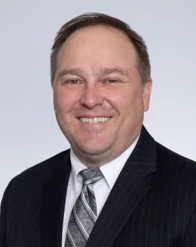Industry Insights
February 27, 2024
Kamin: The Varying Motivations for a CT Claim
- State: California
- - 0 shares
Identifying the motivation for suspicious cumulative trauma claims can help inform carriers in defending against them.

John P. Kamin
California is known as the one state in the nation with a cumulative trauma doctrine. The doctrine arises from Labor Code 3208.1, which allows applicants to file claims for “repetitive mentally or physically traumatic activities extending over a period of time.”
When a questionable new cumulative trauma claim arrives and the employer is certain there were no prior complaints or reports of injury, I recommend looking out for facts that can help identify the motivation for the claim. Motivating factors can include:
- Anger at co-workers.
- Disgruntled over being fired, disciplinary actions, pay or missed promotion.
- Solely for financial gain.
- Doesn’t want to work.
- Legitimate repetitive use injury.
Where can one find these motivations? Talk to the employer and see what it has to say. Knowing what is motivating the injury can help guide your discovery plan.
For instance, if an applicant has filed the claim solely because he's angry or does not want to work and there is no actual injury, then sub rosa is far more likely to be effective. This is because if an applicant is operating out of anger or laziness, he's going to be far more tempted to lie about things. And if an applicant is bold enough to lie about his employment, he's more likely to lie about working another job while collecting TTD or lie about collecting EDD while receiving TTD or other benefits.
The same goes for applicants who are filing solely for financial gain, as they will exaggerate their symptoms to try and pump up the value of their claim. In those cases, defendants should be on the lookout for objective evidence of injury, such as the range of motion from different doctors, diagnostic tests from reputable providers, and treatment plans. If the applicant’s treatment plan appears aimed at actually recovering from the injury, then it could be a more credible claim. But if the applicant is treating with a sketchy provider who is in the wrong specialty and just issuing copy/paste reports, the motivation is probably solely for financial gain.
Conversely, defendants need to identify legitimate repetitive use injuries. Not everybody has beef; some folks have legitimate pain or loss of use and want to get better. These claims should be immediately accepted and provided with medical care, as these applicants have a legitimate injury and will usually go to a treatment plan that is aimed at getting better. This category of applicants will be far more straightforward in depositions and more likely to get surgeries recommended by the physicians on the case.
It’s important to try to remain objective during the factual investigation and depositions, as some claims will straddle some/all of the categories we discussed above.
I recall one sketchy claim where an applicant had a legitimate work injury but was lying in most of her deposition answers about pretty important facts.
It eventually occurred to me that the applicant was a big talker and literally incapable of telling the truth most of the time. I recall asking her about her concurrent employment. At the first deposition, she said she never had any injuries at her other job. At a second deposition, she said she quit the concurrent employment because they injured her and always ignored her work restrictions.
In that case, even the most conservative doctors on the case said that she did, in fact, have a legitimate injury, but they also noted symptom exaggeration and malingering. At least that led the defendants to analyze her claim from a more nuanced perspective, which helped aid discovery and bring resolution.
Conclusion
Defendants need to try to identify the motivating factors for cumulative trauma claims, as those will help inform discovery efforts on defense strategies.
John P. Kamin is a workers’ compensation defense attorney and partner at Bradford & Barthel’s Woodland Hills location. He is WorkCompCentral's former legal editor. This entry from Bradford & Barthel's blog appears with permission.
Advertisements
Columns
- Langham: Uniformity in Regulations 04/25/24
- Kamin: Expanding the Good-Faith Personnel Action Defense 04/24/24
- Moore: Reciprocity Adds Authority 04/23/24
- Montgomery: Sedgwick Tries PPO Discount for Med-Legal (Again) 04/19/24
- Kamin: More Policy Exclusions Would Reduce Losses 04/18/24
- Phillips: It's All Settled 04/17/24
- Snyder: Public Benefit Rules Have Changed, but It Might Not Make a Difference 04/12/24
- Headrick: Clearing Up a Common Misconception 04/11/24
- Snyder: Litigation Guidelines Should Define Four Settlement Triggers 04/10/24
- Kirsch: Depositions of Comp Carrier Employees After Intervening in Third-Party Actions 04/09/24
- Wilson and Bennett: Could AI Have Prevented the Opioid Crisis in Workers' Comp? 04/08/24
- Moore: Pandemic Effect Over in March 2027. Really? 04/05/24
- Geaney: A Brief History of Our State's Workers' Compensation Act 04/04/24
- Kamin and Larres: Significant Panel Decision Clarifies Recon Confusion 04/03/24
- Gelman: Exposed to 'Forever Chemicals' 04/02/24
- Montgomery: Cyberattack Delays Payment of San Francisco Bills 04/01/24
- Young: Indoor Heat Regs in Turmoil 03/29/24
- Langham: Shootings and Compensability 03/27/24
- Geaney: Third-Party Liens Not Always Due Right Away 03/26/24
- Larres: State Supreme Court Denies Review of Our Appellate Win 03/25/24
Now Trending
- Workers' Compensation News
-
Calif. DWC
Launches Portal for QME…
Posted on Apr 24, 2024Dr. Ron Perelman says: “The problem is that most QMEs are older docs. Many are semiretired.…”Kimberley J Pryor says: “I had planned to post a well constructed comment, but I stopped…”
-
Calif. Worker Gets
Benefits for Crash Despite Leaving
Job Site Without Employer's…
Posted on Apr 25, 2024
-
Calif. Committee
Passes Bill to Eliminate Contractor
Comp Coverage…
Posted on Apr 26, 2024Gary Nelson says: “I think Dodd was right in 2022. …”
-
Calif. DWC Updates
Time-of-Hire…
Posted on Apr 23, 2024
-
Calif. Committee
Passes Bill to Expand 4850…
Posted on Apr 22, 2024
-
Calif.
Appropriations Committee Places TD
Bills on Suspense…
Posted on Apr 24, 2024
-
Calif. Newsom Says
Indoor Heat Safety Rules Too
Expensive for…
Posted on Apr 25, 2024
-
Neb. Divided
Supreme Court Reinstates
Occupational Disease Claim for…
Posted on Apr 23, 2024
-
Ore. Worker Can
Request Examination if Carrier
Supports Claim Denial With IME…
Posted on Apr 22, 2024
-
Ark. Worker Not
Entitled to Additional Benefits
After Date of…
Posted on Apr 22, 2024
Jobs
Upcoming Events
May 5-8, 2024
Risk World
Amplify Your Impact There’s no limit to what you can achieve when you join the global risk managem …
May 13-15, 2024
NCCI's Annual Insights Symposi
Join us May 13–15, 2024, for NCCI's Annual Insights Symposium (AIS) 2024, the industry’s premier e …
May 13-14, 2024
CSIA Announces the 2024 Annual
The Board of Managers is excited to announce that the CSIA 2024 Annual Meeting and Educational Con …
Social Media Links
c/o Business Insurance Holdings, Inc.
Greenwich, CT 06836





No Comments
Log in to post a comment